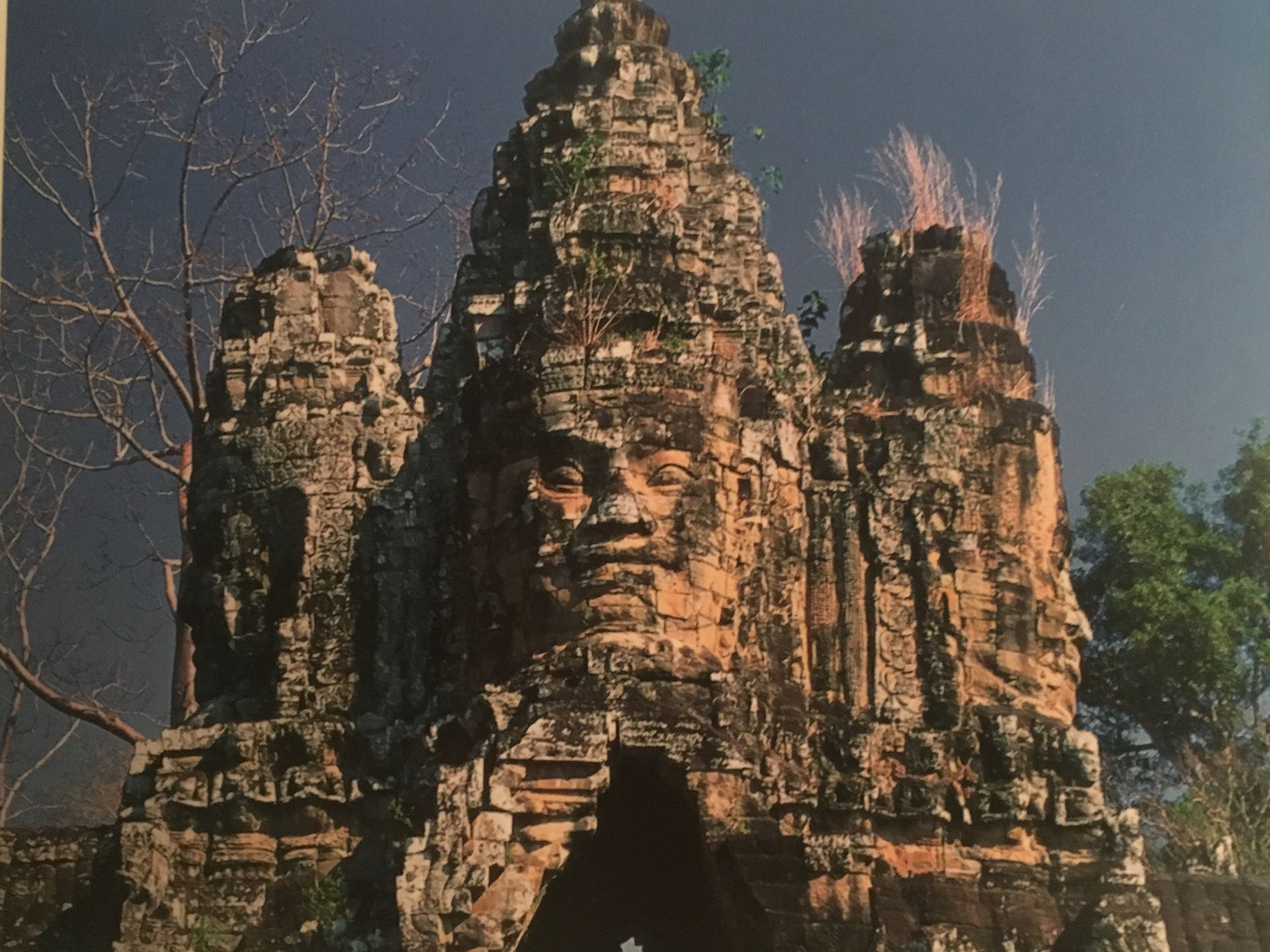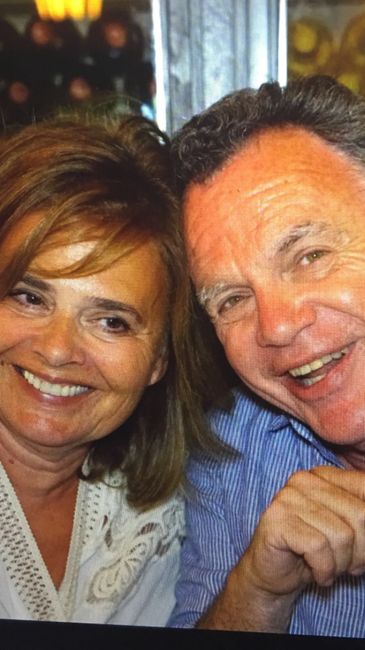21st Day in Phnom Penh
প্ৰকাশিত: 29.01.2019
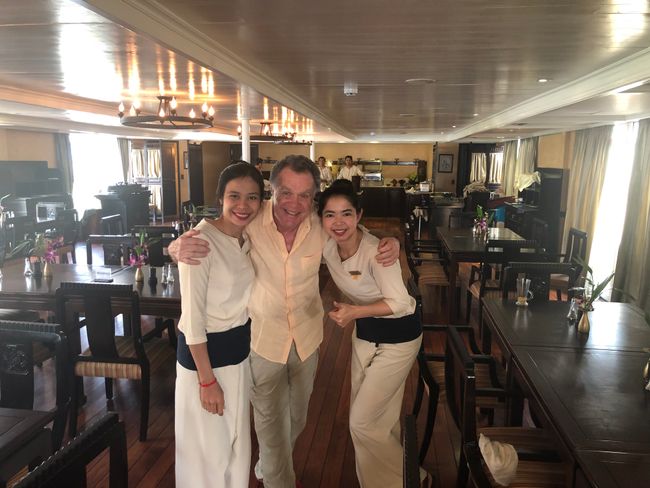
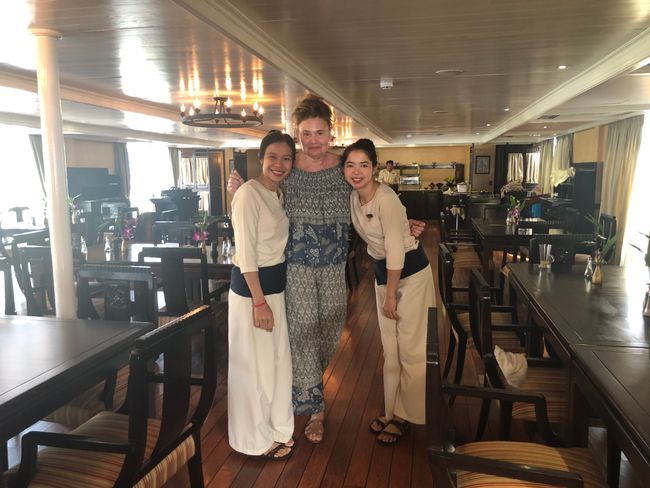
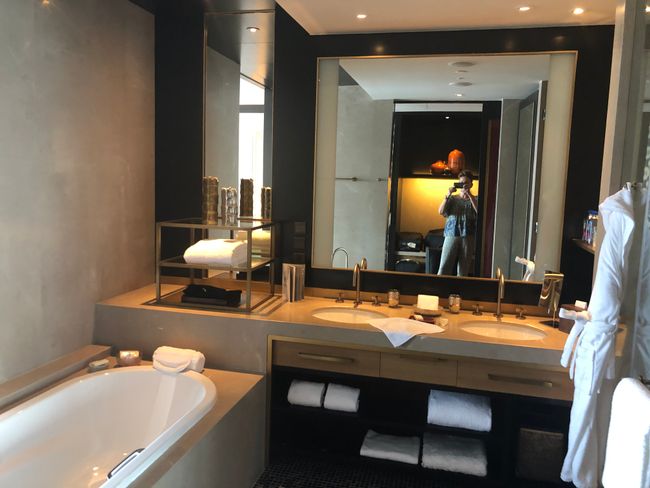
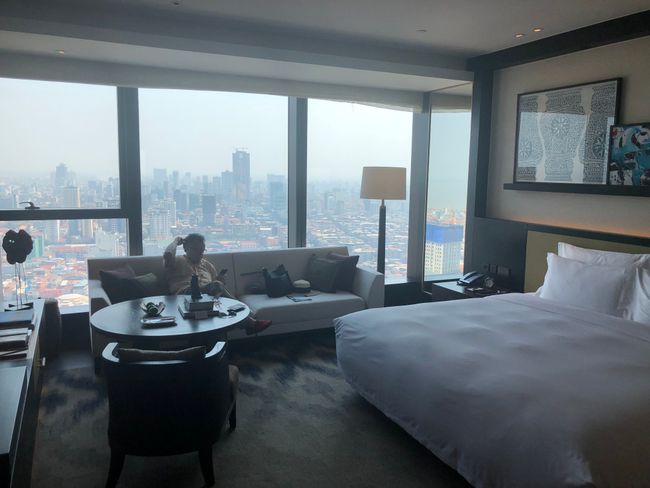
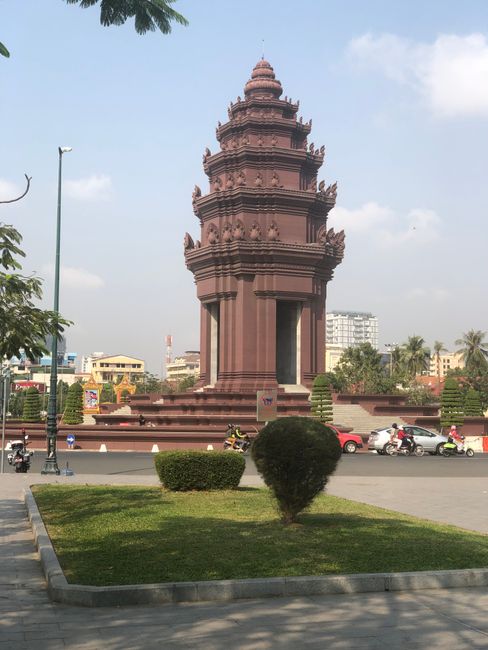
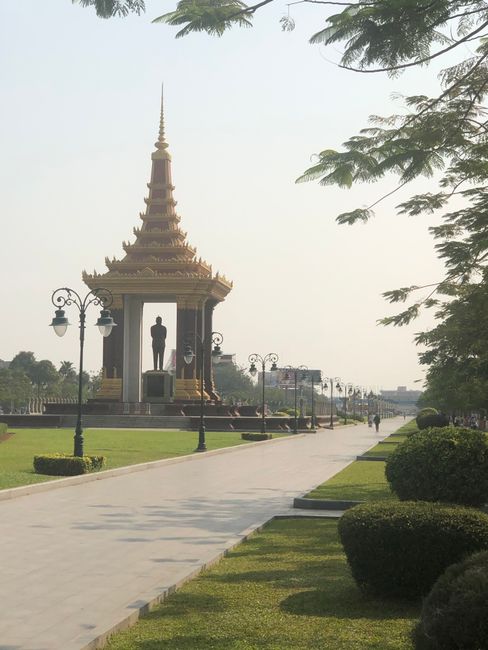
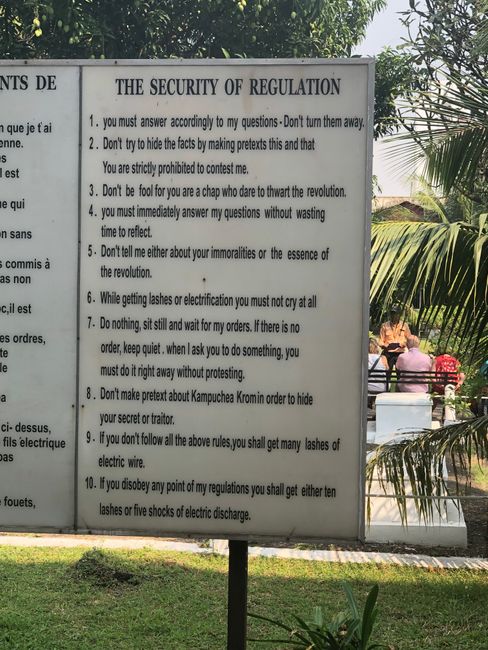
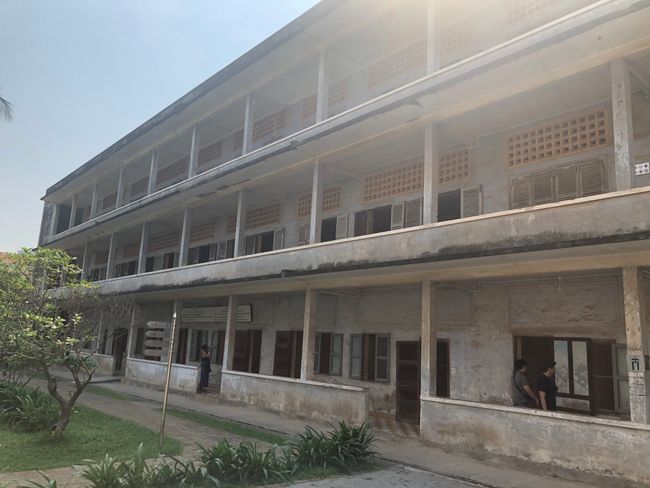
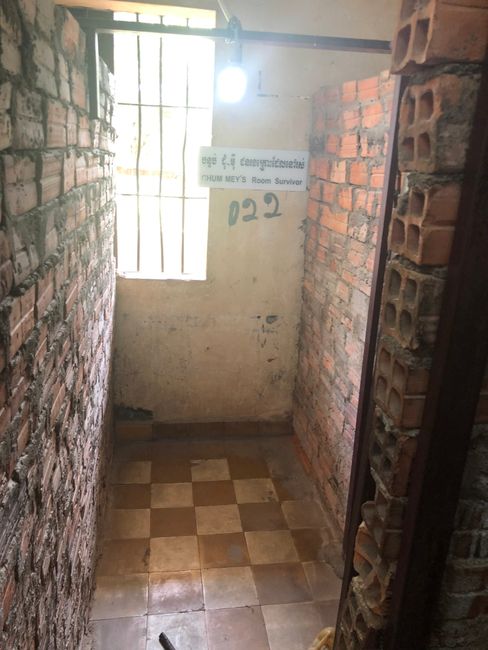
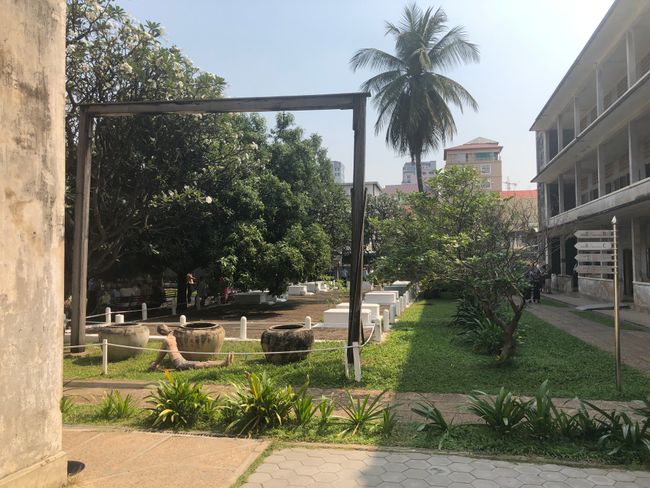
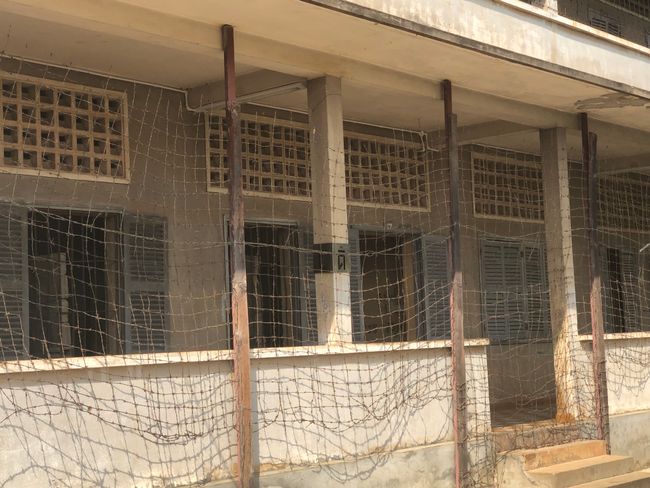
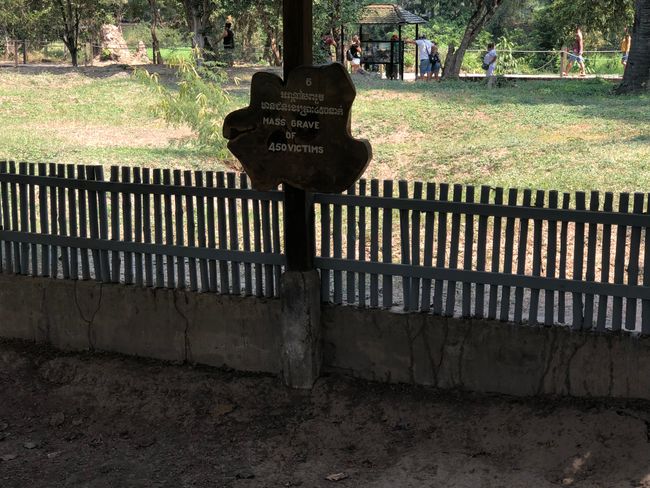
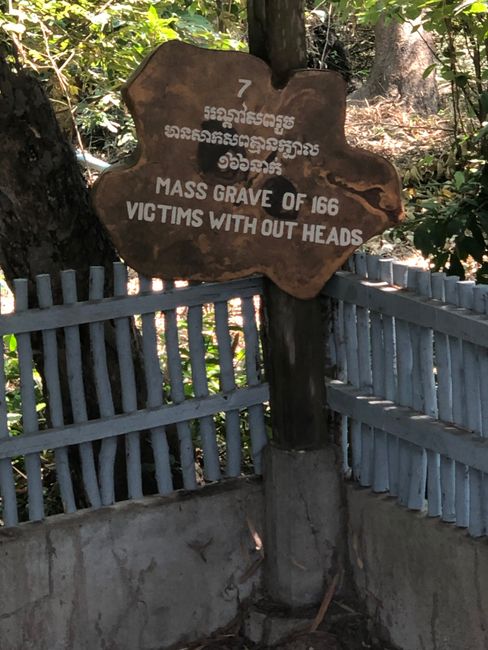
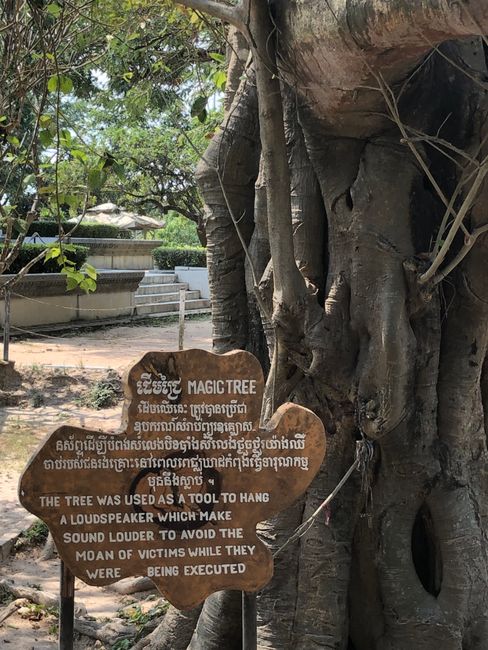
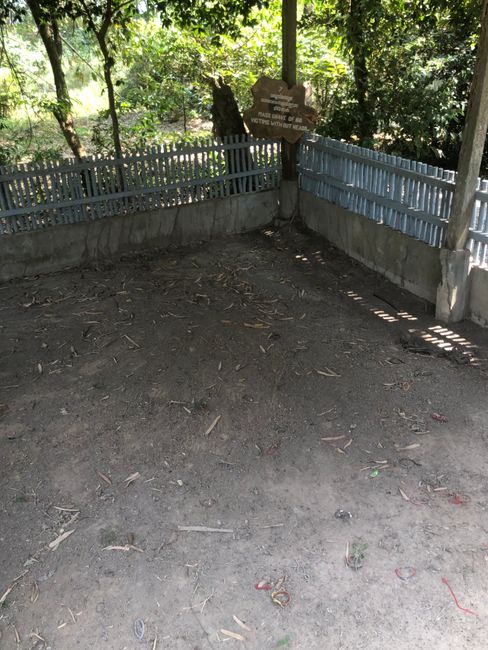
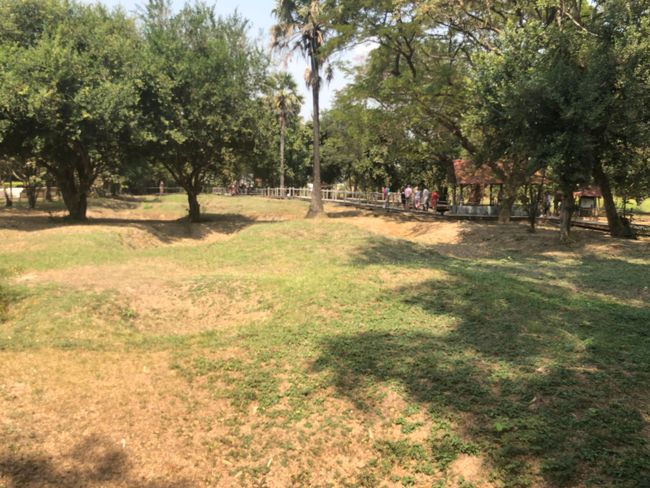
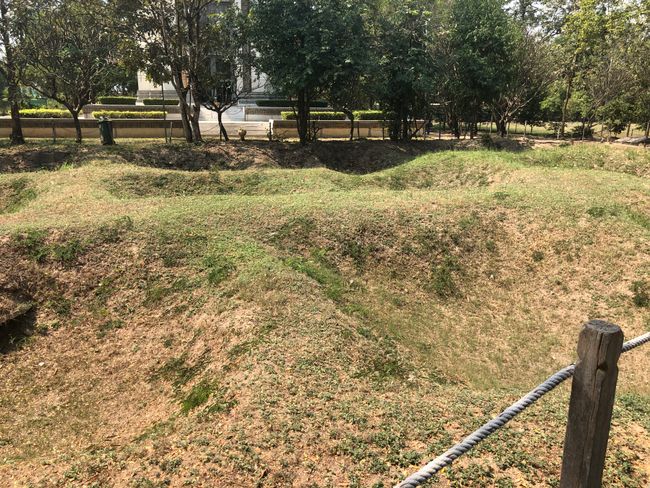
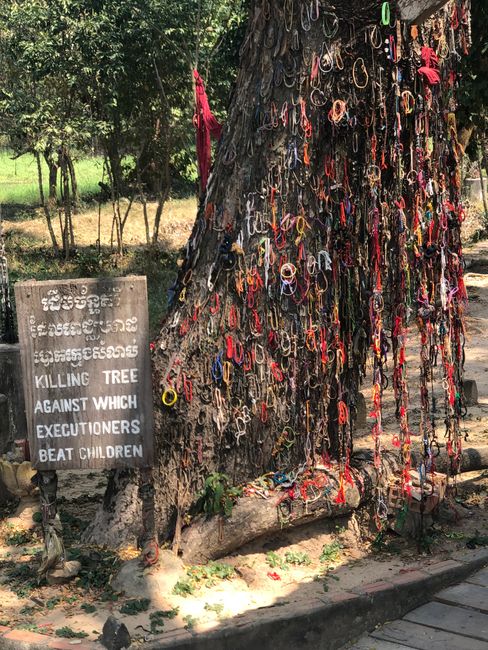
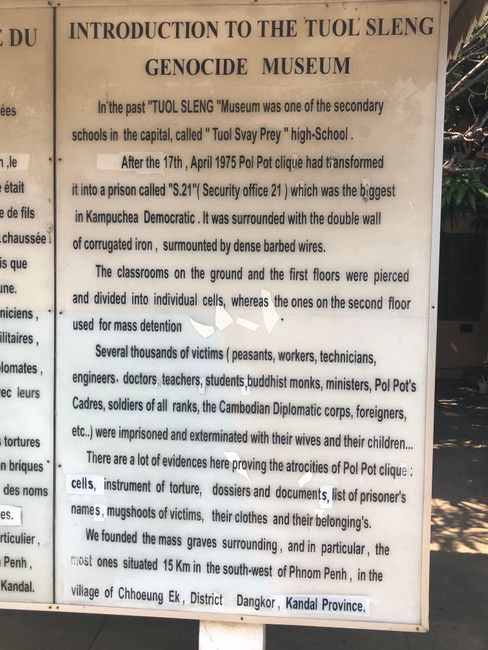
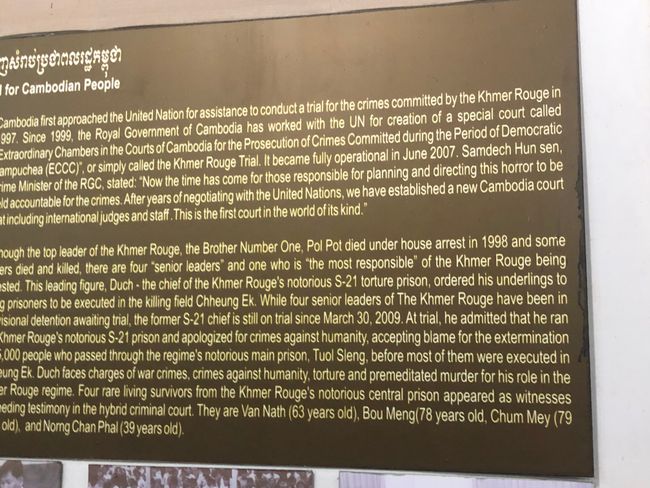
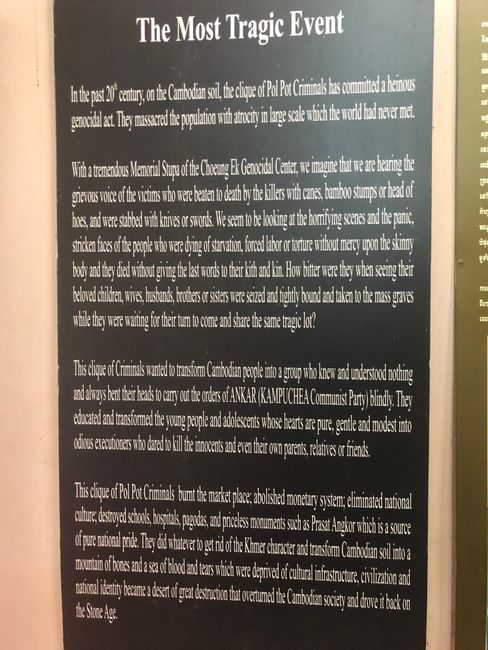
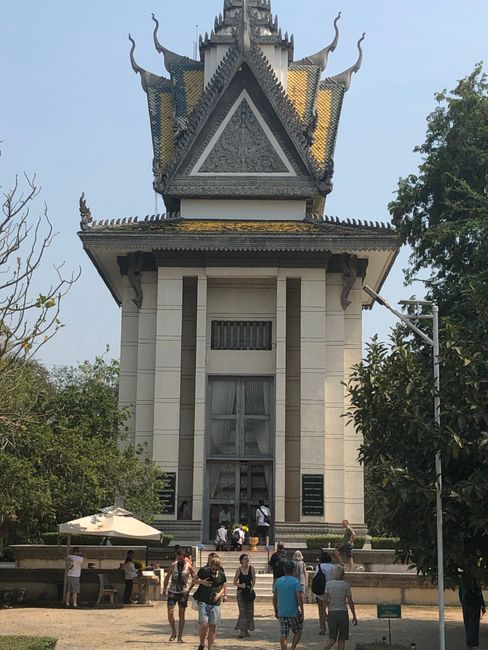
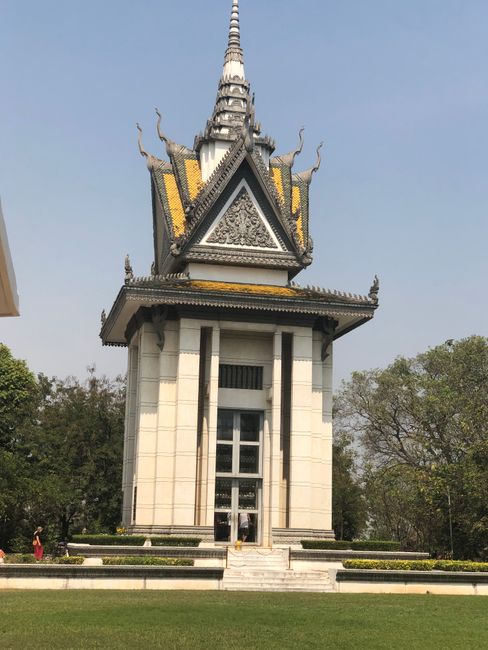
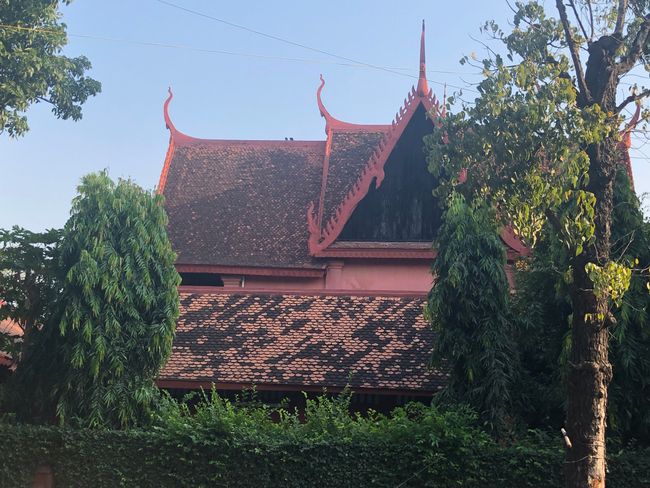
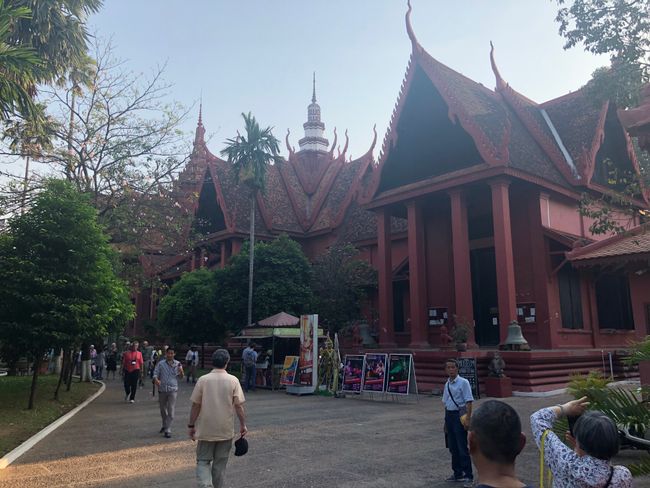
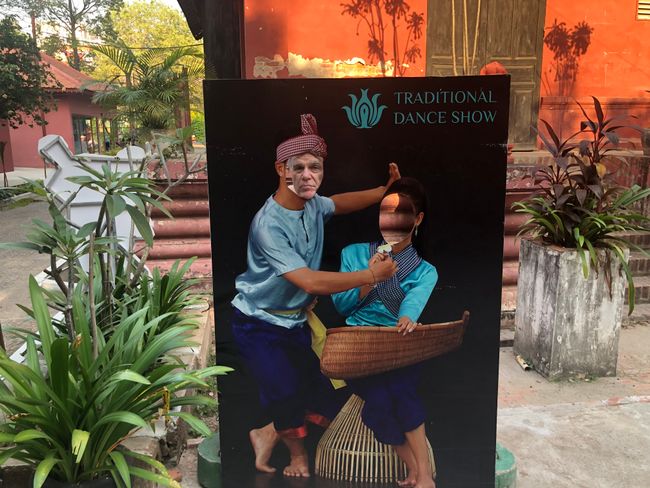
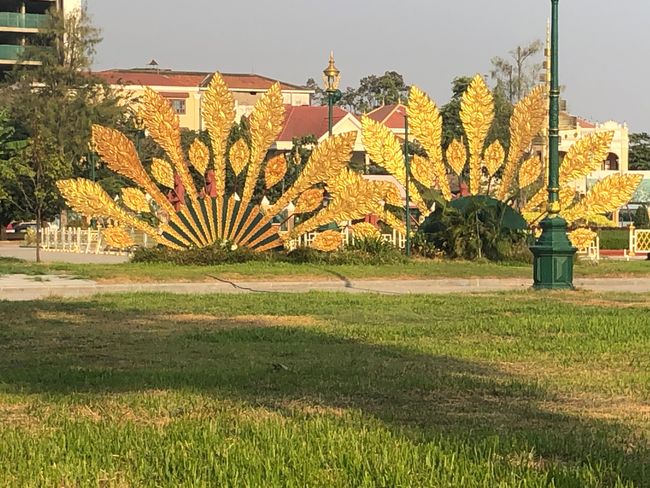
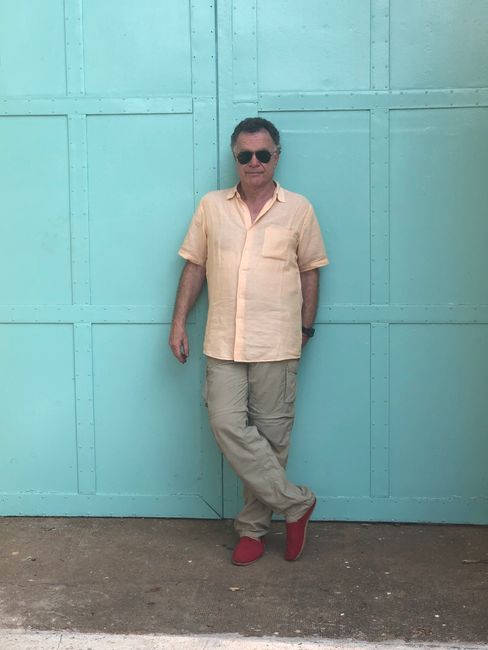
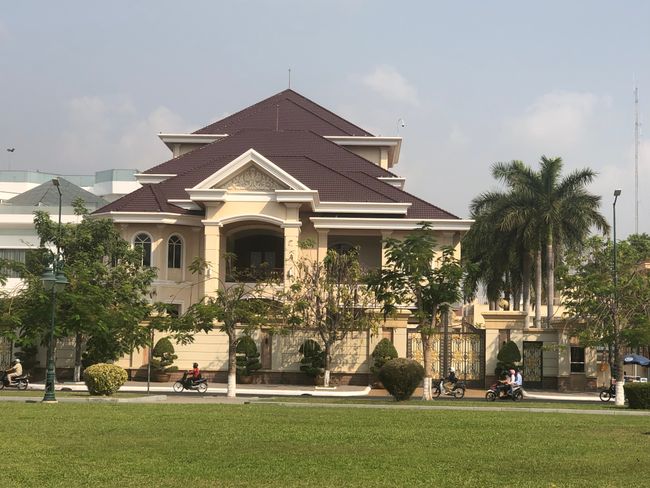
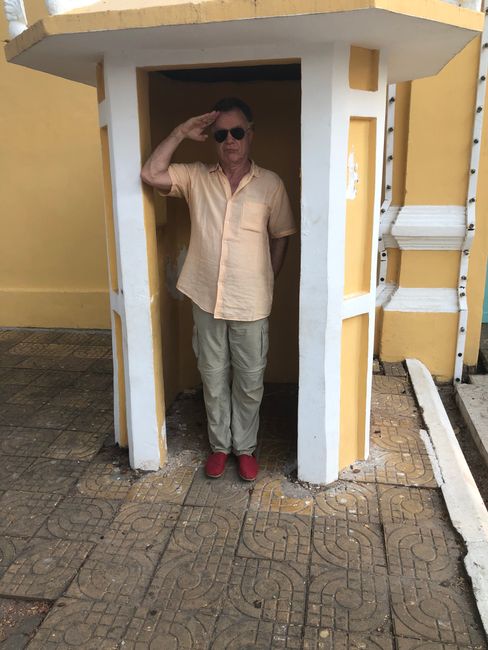
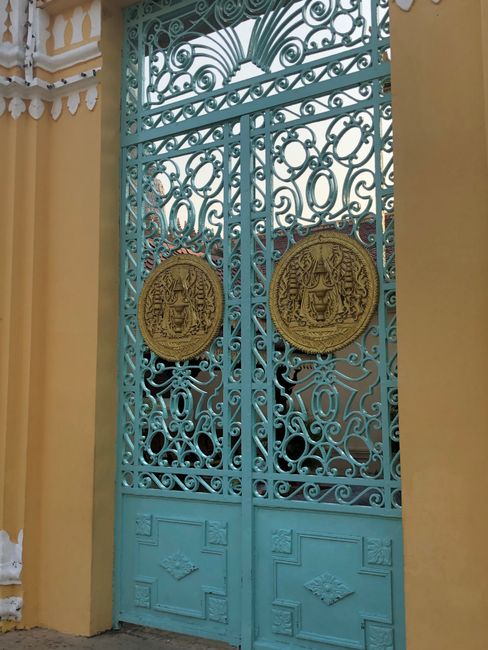
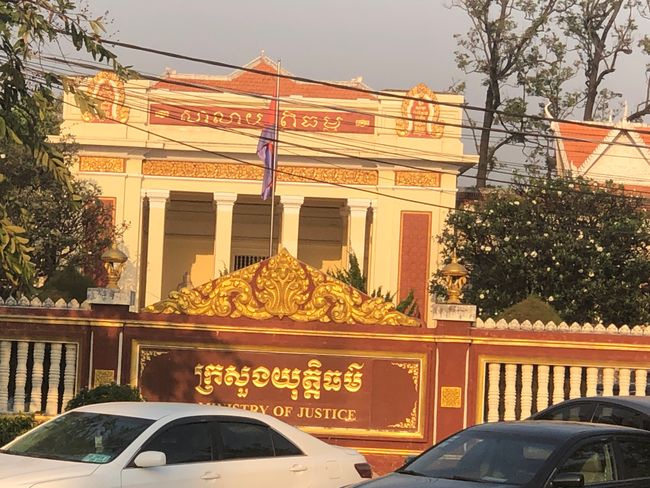
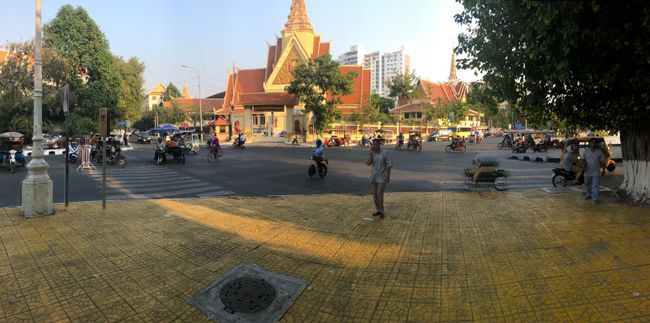
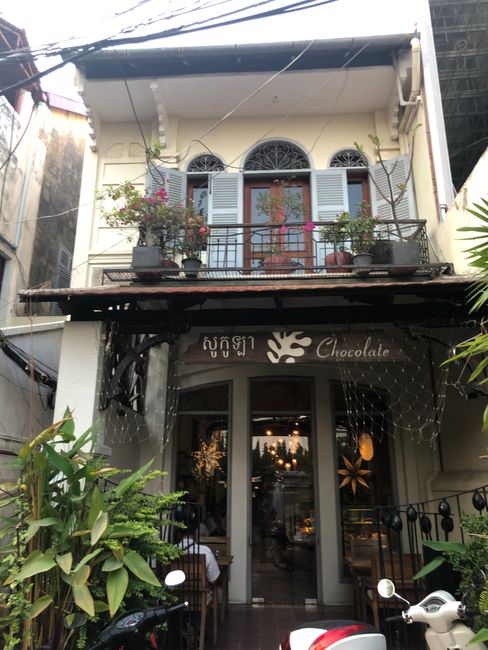
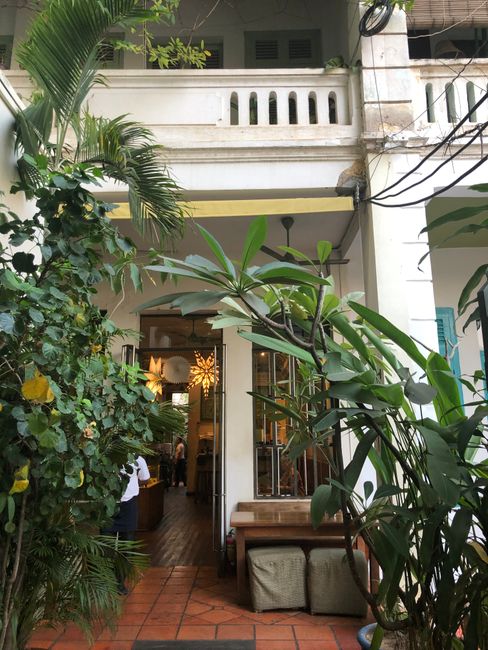
নিউজলেটাৰ চাবস্ক্ৰাইব কৰক
If you open the "Quizz" post again, you will see the solution.
Last night we moored in the port of Phnom Penh, the final stop of our river journey. Right after dinner, the photographer wanted to conquer the night market, but what a disappointment, only cheap Chinese junk. I wasn't unhappy because it meant we could soon return to my beloved boat and go to the cabin, the last night on the boat.
In the morning, we had our last breakfast and a heartbreaking farewell to our two ladies from the on-board restaurant, sob.
A short time later we were picked up and taken to downtown Phnom Penh. Oppressive humidity with over 30 degrees Celsius already at 10:00 am. Quick visit to the Independence Monument and then a ride to Prison 21 and the Killing Fields afterwards.
It is difficult for me to find words for this. The horror held us both captive for many hours and even now, as I write about it, I lack the words to adequately describe this barbaric genocide by left-wing ideologues. I had seen the movie "Killing Fields", but a film, no matter how cruel it was, cannot replace one's own seeing.
First is Prison 21 in the middle of Phnom Penh, one of about 160 prisons of the Khmer Rouge, but the only one designed as a museum. In the years 1975 to 1979, about 20,000 people - men, women and children - were imprisoned here, brutally tortured until they all confessed and then taken to the Killing Fields and killed there, beaten to death with knives, iron bars or bamboo sticks and buried in mass graves. You have to see the cells, individual cells for higher-ranking prisoners and mass cells for ordinary people, men, women and children together. Of the approximately 20,000 prisoners, only 7 men and four children survived. The conditions in this prison, under which the prisoners often had to spend months before they were killed, are so shocking that I do not want to describe the details. Tears came to both of our eyes when listening to our tour guide's words. Read the texts on the pictures. Pictures on the walls, made by a survivor, show a truly heart-wrenching glimpse into the suffering of these prisoners. We did not take any photos of this, we simply could not bear it.
Then we went to the Killing Fields: the mass graves were opened and about 7,000 skulls were kept in a stupa. The texts on the individual mass graves describe the horror that these prisoners experienced and the terrible death that ended their lives. Perhaps the most horrible thing was a tree where small children were beaten to death in front of their mothers' eyes. Throughout the country there were more than 100 Killing Fields, but only this one was preserved as evidence. Of the approximately 7 million Cambodians who were alive in 1975 when the Khmer Rouge came to power, about 2 million died from hunger and murder. Pol Pot himself died in 1998. Only a very few of his henchmen have been convicted.
This and the dead that Mao Tse Tung and Stalin are responsible for are sufficient evidence that it was not only the right-wing that committed mass murder, the left-wing radical ideologues were no less guilty.
Afterwards, we were taken to our hotel, a beautiful accommodation on the top 10 floors of the tallest building in Phnom Penh, with furnishings that Sabina loved so much that she wanted to ship the entire inventory to Berlin. However, the price negotiations with the hotel management failed when it turned out that Sabina was assuming Cambodian currency, while the other side insisted on US dollars.
After a quick lunch at a hyper-stylish restaurant, we went on a walking tour of Phnom Penh at 34 degrees Celsius and high humidity. First to the Central Market, a huge market with garbage. Then a one-hour walk to an area described to us as a shopping area. Most streets in Phnom Penh have no sidewalks, so we were constantly in danger of being run over by rushing mopeds, but miraculously we arrived at our destination alive. The result of our efforts was disappointing, but at the same time very gentle in terms of credit card expenses. Then past the National Museum and the Royal Palace, both of which are on the schedule for tomorrow, and then a street that Sabina had filtered from the internet, which turned out to be very beautiful, with beautiful colonial buildings and nice cafes and small boutiques. Fortunately, Sabina was too exhausted, so we boarded a tuk-tuk and returned to the hotel.
Showering was mandatory at the hotel.
নিউজলেটাৰ চাবস্ক্ৰাইব কৰক
উত্তৰ (4)
Joe
alleine das Lesen ist grausam, aber beeindruckend und ergreifend geschrieben.
Andererseits habe ich Dich, Henio, selten so lachen sehen, wie mit den beiden
Schönheiten. Jutta
Schrecklich, das der Irsinn nie aufhört.
Es fiel mir schon schwer deinen Text zu lesen, wobei ich mir vorstellen kann, daß ihr von den Guides noch Schlimmeres erfahren habt.
Der Irrsinn und das Morden werden wohl nie enden. Ich konnte deinen Text schon kaum lesen, wobei ich mir vorstellen kann, daß euch die Guides mit noch Schlimmeren versorgt haben haben.
Kommt jetzt endlich in unser zwar kaltes aber ruhiges und friedliches Germanien zurück.
Jutta
2x war zuviel.
Manfred
Du hast Recht, Menschenmord kennt keine Grenzen oder Ideologien, nur total verrueckte und verdrehte Leute mit extrem krankhaften Visionen. Nur zwei Staaten von euch entfernt in Myanmar leiden heute die Rohyngya an Hand der Buddhistischen Regierung unter ethnischer Säuberung. Kein Ende zu dem Wahnsinn....